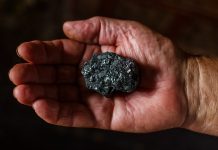
Plants will need more water in the future due to climate change, and this may result to less water availability particularly for people living in North America and Eurasia, according to a new study.
Findings of the research paper “Mid-latitude freshwater availability reduced by projected vegetation responses to climate change”, published in Nature Geoscience, reveal that plant responses to climate change will make the land drier instead of wetter and this will affect millions of people.
The researchers identified how the impact of the interaction of three key effects of climate change on plants can make regional freshwater less available. Their analysis reveals that with an increase of carbon dioxide in the atmosphere, plants would demand less water to photosynthesize. This causes the wetting of the land.
The study points out that growing seasons become longer and warmer as the planet warms. The land becomes dry as plants have longer time to grow and absorb water. Moreover, as carbon dioxide concentrations rise, plants may grow more.
"Approximately 60 percent of the global water flux from the land to the atmosphere goes through plants, called transpiration. Plants are like the atmosphere's straw, dominating how water flows from the land to the atmosphere. So vegetation is a massive determinant of what water is left on land for people," said Justin S. Mankin, the study’s lead author, an assistant professor of geography at Dartmouth, and adjunct research scientist at Lamont-Doherty Earth Observatory at Columbia University.
"The question we're asking here is, how do the combined effects of carbon dioxide and warming change the size of that straw?" he said.
Mankin’s team used climate models to uncover how potential changes in the way precipitation is divided among plants, rivers, and soils can affect freshwater availability.
“Our research shows that we can't expect plants to be a universal panacea for future water availability. So, being able to assess clearly where and why we should anticipate water availability changes to occur in the future is crucial to ensuring that we can be prepared," said Mankin.






